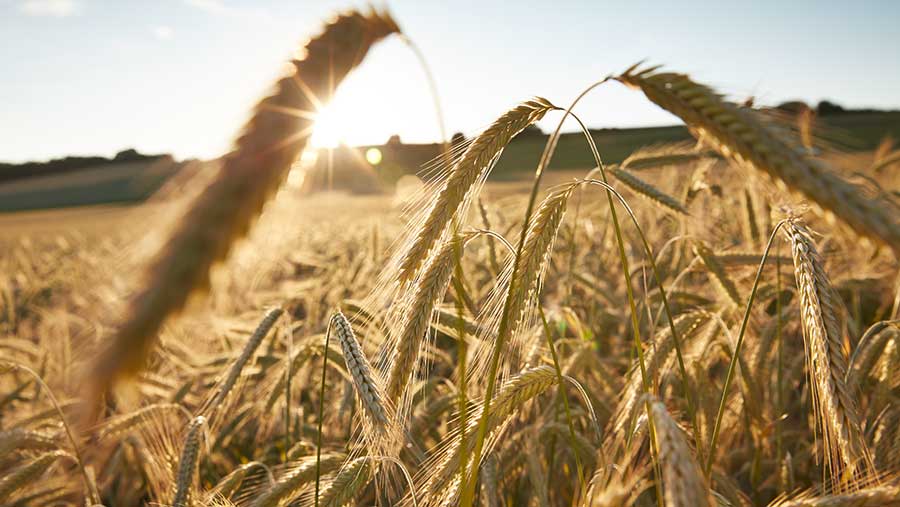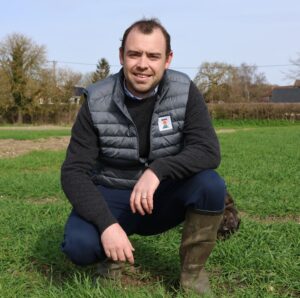Advertiser content
Could hybrid rye help decarbonise the UK food supply chain?
Provided by
KWS is one of the world's leading plant breeding companies combining 165 years of heritage with leading edge technology and a commitment to develop and deliver varieties with the best yields, disease resistance, physical traits and resistance to abiotic stress.
 © KWS UK Ltd
© KWS UK Ltd Hybrid rye continues to win favour with UK growers due its simpler management and lower input use than many other cereals but it’s a crop that could have implications for the wider food industry, says KWS UK hybrid crops manager Kate Cobbold.

Kate Cobbold © KWS UK Ltd
Use of hybrid rye in bread, bakery products and drinks gives processors access to a low-carbon-footprint commodity, but new work in pig and poultry feeds suggests the benefits could be much greater, she says.
“There are many reasons hybrid rye is attractive to growers. It can be integrated easily into the crop rotation with many benefits including reducing fertiliser, crop protection inputs and spreading on farm workloads.
“Hybrid rye can also provide high yields on drought-prone soils through a deep rooting system which also aids in improving soil structure.
“There are a number of markets, from grain for animal feed to more niche grain markets including distilling and rye bread flour, plus hybrid rye has excellent straw that can add an additional income stream.
“It’s also popular for anaerobic digesters (AD) where its significant above-ground biomass and larger ears compared to conventional varieties means that hybrid rye has the perfect plant architecture for this market.”
Significant cost benefits

Rory Hannam © KWS
Where hybrid rye really wins out over more conventional cereal choices is in its lower input requirement and superior drought tolerance, adds KWS UK hybrid crops technical manager Rory Hannam.
“Hybrid rye has an aggressive, deep rooting system, making it suitable for light land that is drought prone, but it still yields well on heavier land.
“This rooting system not only helps with water uptake in difficult seasons but also nutrient scavenging.
“Rye has a typical nitrogen requirement of 120-150Kg/ha which offers major financial savings over many other cereals as well as having a profound effect on the carbon footprint of its production.
“Fewer disease threats and much simpler agronomy mean there are also savings in input use and fuel used in applications.
“Hybrid rye has got pretty much everything going for it at the moment and our highest yielding variety KWS Tayo takes virtually all the benefits several steps forward.
“It’s a new generation PollenPlus hybrid with excellent stem stiffness, suitable for feed, flour and distilling plus it’s got a superb harvest index in terms of grains per ear which really drives yield.”
Reduced carbon footprints
According to Kate Cobbold, with the whole food supply chain now focused on reducing carbon footprint, these benefits have added relevance with initial work carried out in egg production showing why.
“The earlier advantages seen when rye is fed to pigs are now being added to following results seen in trials carried out by KWS and feed producer Harbro with 16,000 egg-laying hens.
“The trial, using two 8,000 bird flocks, compared a wheat-based ration with one where rye replaced the wheat by up to 25% with no differences in hen health, egg numbers, egg size, quality and litter waste being seen between the two rations.
“Historically egg producers have been reluctant to include rye, thinking that there may be a detrimental effect on egg production, but these results show feeding rye to hens up to 25% inclusion in rations has no adverse reaction.
“This benefits egg producers considerably because not only are the costs of feeding rye lower but supermarkets and other sellers of eggs are increasingly looking for products that have lower carbon footprints to meet the UK’s 2030 targets.
“The agronomic advantages of hybrid rye together with its very low nitrogen requirement mean the carbon footprint of eggs produced from rye-based feeds could be significantly lower than eggs produced with conventional diets.
“Taking this thinking across the food supply chain means rye could play a significant role in decarbonising food production in many sectors.”
KWS Tayo hybrid rye in detail
- Grain yield (% treated controls) 104
- Brown rust (1-9) 7
- Lodging (%) [7]
- Straw length (cm) 131
- Ripening (days+/- SU Performer) +1
- Protein (%) 9.0
- Hagberg falling number 248
- Specific weight (kg/hl) 76.3
